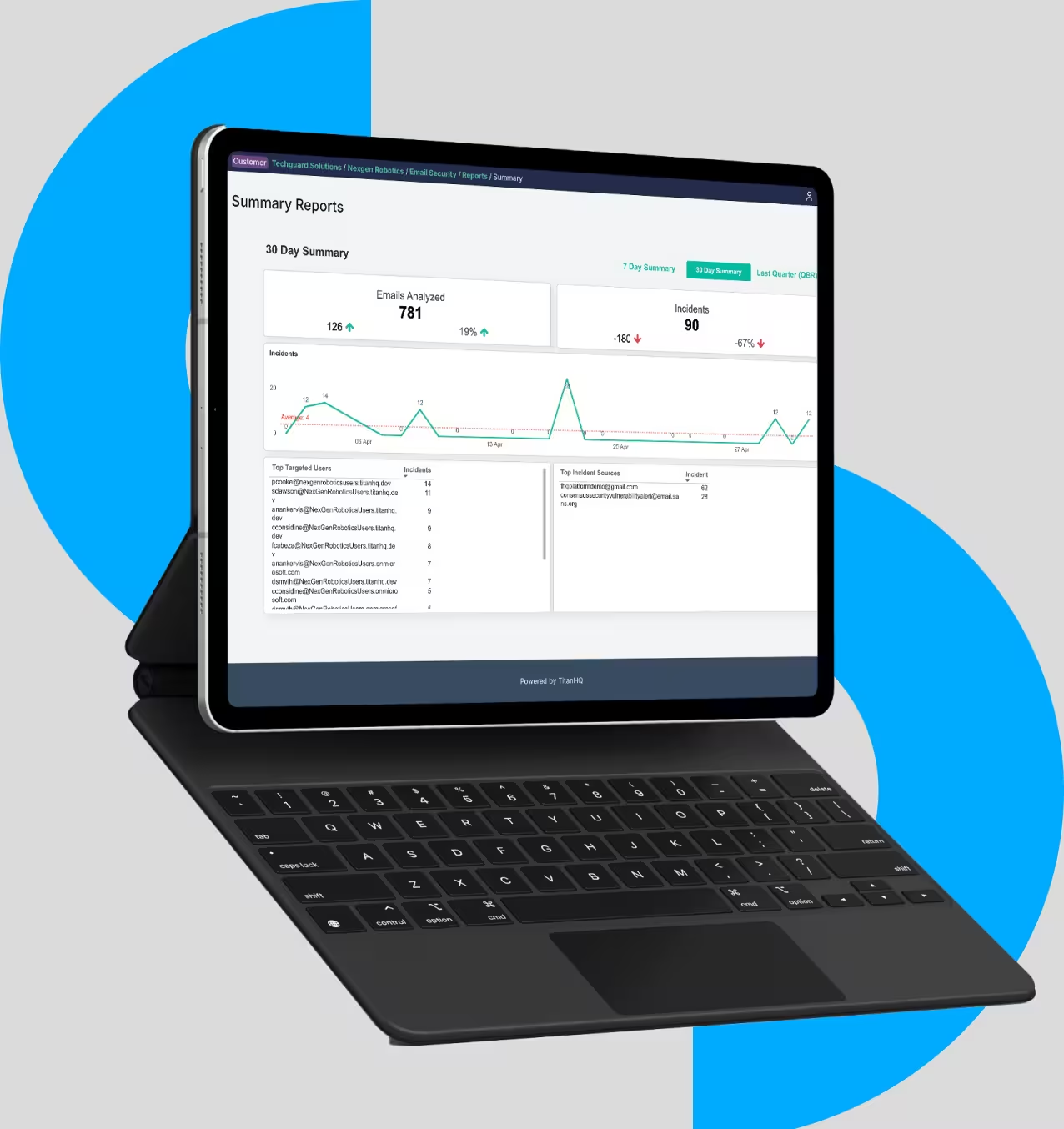Protect M365 with AI-powered ICES: advanced, cloud-based email security using multilayered machine learning analysis, API-native integration, augmenting EOP and Defender.
AI-powered detection stops sophisticated phishing and email threats.
Real-time protection and instant inbox threat removal with malicious URL blocking.
Adaptive, integrated solution outpaces traditional defenses and enhances Microsoft 365 security.
Unsafe email banners alert users, strengthening awareness and reducing successful attacks.

Integrated Cloud Email Security (ICES) goes beyond traditional email protection. It delivers a modern defense built for today’s increasingly sophisticated cyber threats, where email remains the entry point for 96% of breaches. In a cloud-first world, organizations can no longer rely on legacy safeguards. The urgency for smarter, more adaptive email security has never been greater, and ICES is leading the way in redefining how businesses protect their most critical communications.
AI-powered phishing protection that stops threats before they reach your inbox.
Machine learning enables the system to recognize attack patterns and adapt to new tactics, ensuring even emerging and zero-day threats are detected and stopped.
Phishing tactics have also evolved in recent years, with cybercriminals creating phishing campaigns that utilize evasive tactics that circumvent the detection of conventional SEGs. Tactics include the use of QR codes that conceal malicious links and the deployment of multipart phishing scams that employ social engineering to manipulate employees.
One highly evasive phishing campaign behind the Business Email Compromise scam is the W3LL phishing kit. The Phishing-as-a-Service (PaaS) kit allows cybercriminals to bypass Microsoft’s MFA and applies obfuscation methods for email headers and body text to evade detection by SEGs.
MFA bypasses are increasingly common. Techniques include the use of infostealer malware to intercept session cookies, causing MFA fatigue using MFA bombing, and social engineering.
Conventional SEGs like native Microsoft 365 security miss these increasingly complex and evasive email threats. A report by TitanHQ and Osterman Research found that 79% of organizations experienced at least one cybersecurity incident, even with a security layer on top of M365. Notably, 79% of respondents also stated that email security solutions incorporating defensive AI are “very important” or “extremely important” to their cybersecurity posture.
ICES, as an AI-powered email security solution, represents the next generation in augmenting or replacing conventional email security.
Machine learning provides the technical capability needed for the protection system to learn and identify patterns in attack tactics, technologies, and processes. This ongoing learning, as used by ML, means that even emerging attacks and zero-day threats can be identified and prevented.
This type of AI is used to identify threats such as social engineering and multi-part phishing campaigns. The NLP engine analyzes email content, looking for indicators of compromise that are formed around specific language patterns.
AI-driven anti-phishing can be used to examine malicious links in an email and verify the website the links direct to. If the website is found to be legitimate, the email will be released to the user’s inbox.
URL analysis is used to validate the security of a URL against multiple curated anti-phishing feeds. We provide time-of-click protection by inspecting and rewriting all URLs to detect links to malicious sites, ensuring safety against harmful URLs.
A service that ensures the company remains protected even if a recipient clicks a URL in a malicious email.
Prevents sensitive data from leaving the corporate network, even if it is done accidentally or maliciously.
Acts as an additional layer of risk mitigation and enhanced protection.
Compliant with fast search and email hold.
Training for all employees to help them identify phishing and change risky security behaviors.
Helps to block malware, phishing sites, and risky content at the network level
One-click granular backup and recovery for the Microsoft environment.
ICES adds capabilities to existing email platforms. ICES solutions use advanced security to enhance any existing conventional security layers in an email server. ICES adds AI capabilities to conventional SEGs. Deep integration with existing email systems, such as Microsoft 365, ensures that the built-in security, including Microsoft Defender and EOP, is enhanced with defensive AI capabilities.
API-based integration is straightforward. There is no need to reroute email or reconfigure MX records. Machine learning is used to detect emerging threats and zero-day threats.
Integrated security awareness training is included in some ICES offerings. Employees receive contextual training that helps them identify phishing attacks and modify risky behavior.
The data captured during detection and prevention by an ICES service can be fed into SIEM (Security Information and Event Management) platforms to generate insights into the threat landscape, helping a company improve its security posture.
Many ICES solutions are delivered using a managed service provider (MSP). These solutions are cloud-based and managed using a centralized, multi-tenant console.
Email security is complex. Cybercriminals are increasingly integrating the capabilities of AI into email-borne attacks. Conventional email security gateways can no longer detect these sophisticated, often evasive cyberattacks. The entry of Integrated Cloud Email Security solutions into the market means that AI-assisted cyber-attacks can be detected and prevented.
CyberSentriq is redefining email security with its Integrated Cloud Email Security (ICES) solution. Powered by advanced AI and machine learning, ICES detects sophisticated threats, including BEC, social engineering, and lateral phishing, that slip past traditional defenses.
By combining behavioral AI with a people-centric model, ICES adapts protection to an organization’s most at-risk users. Real-time contextual banners further boost awareness, warning users of suspicious emails as they arrive. This cloud-native approach delivers accurate threat detection, fewer false positives, and uninterrupted business communications, ensuring organizations stay secure against evolving email-based attacks.